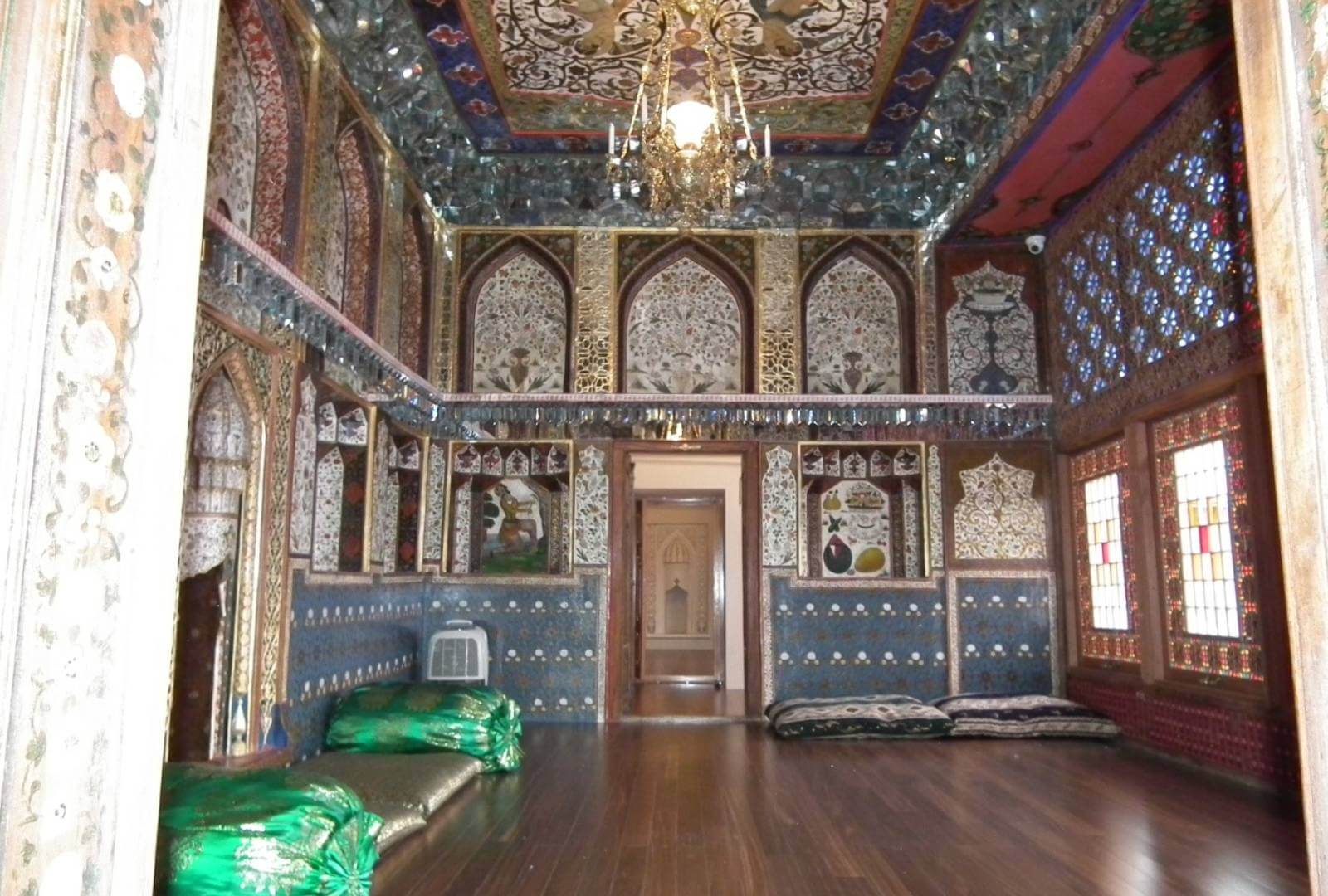Discover the Rich History of Shekihkhans' House in Sheki: A Palace-style Residence with Unique Architectural Features

Discover the Rich History of Shekihkhans' House in Sheki: A Palace-style Residence with Unique Architectural Features
Shekihkhans' House is a palace-style residential building rich in decorative elements. Located not far from the fortress, to the west of the Sheki Khan’s Palace, in the Otagh Ishigi neighborhood, it was built in the second half of the 18th century using the lattice technique. Numerous studies have proven that the wall patterns inside this building date back to the same period as the patterns in the Sheki Khan’s Palace, the second half of the 18th century. The Shekihkhans' house was home to the relatives of the Sheki Khans.
The building is an extended, rectangular two-story structure made from raw bricks and consists of 6 rooms and 2 hallways. The richness of its interior decorative elements gives the Shekihkhans’ house a resemblance to palace-type residences. The rooms on the first floor are winter living spaces, with steam heaters installed. The Sheki people typically spend the winter on the first floor of the house. The facade of the first floor of the Shekihkhans' house is simply constructed and aligns well with the design of other residential buildings in Sheki. There are almost no ornaments or patterns on the lower part of the facade, and even the steam heaters are undecorated.
On the second floor, the walls are elaborately adorned with plot and ornamental patterns. The interior of the salon on the second floor features a prominent decorative steam heater placed horizontally. Rectangular, shallow niches are embedded in the walls next to the heater. These niches are decorated with miniature paintings based on the motifs of Azerbaijan’s great poet Nizami Ganjavi’s works like “Seven Beauties” and “Leyli and Majnun,” as well as images of animals and birds. The surfaces are topped with relatively simple, ornamented stalactites.
The ceiling of the salon is more richly decorated, depicting four winged girls (angels). These designs are rare examples when compared to the more common animal and bird-based wall patterns from the 18th and 19th centuries. The intricate structure of the mirror stalactite forms the cornice that runs across the top of the salon. Except for the exterior wall of the salon, the remaining space is decorated with ornamental latticework. The multi-colored latticework enhances the room's decor and covers the entire surface of the walls. The light passing through the stained-glass windows creates a vibrant glow on the walls, floor, and ceiling.
The architectural style of this house has influenced the construction of mansion and palace-type houses in Azerbaijan’s far regions. There are significant similarities between the Shekihkhans’ house and the Sheki Khan’s Palace, which is located not far from it. It is presumed that the wall paintings in the Shekihkhans’ house were created by a painter named Firuz, who was somewhat familiar with European painting techniques. However, it is unclear whether Firuz was a local or a foreigner.
On April 13, 2006, during a visit to the Shekihkhans' house, the President of Azerbaijan, Ilham Aliyev, ordered the major restoration of the building, which began in November 2012. The restored building was officially opened in a ceremony attended by the president on August 14, 2013.





Please make sure your contact details, email, country code & number is correct